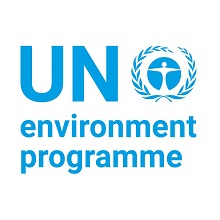Down to Earth: Territorial Approach to Climate Change (TACC)
Project Overview
The Down to Earth: Territorial Approach to Climate Change (TACC) was part of a partnership between the United Nations and sub-national governments for fostering climate friendly development at the sub-national level. This partnership was a collaborative effort involving UNDP, UNEP and eight associations of regions.
The TACC project supported the integration of climate change adaptation and mitigation measures into sustainable development planning and programming in developing countries by:
- Developing partnerships with UN and specialised agencies, national and sub-national governments, centres of excellence and regional technical institutions, and the private sector;
- Making available methodologies and tools for long-term climate change participatory planning to regions and cities and sharing best practices;
- Providing regions with information about climate change challenges and opportunities and technical and financial solutions;
- Providing technical support to up to 20 regions for the preparation of regional climate change plans, including identification of priority mitigation and adaptation measures; and
- Providing technical support to up to 20 regions to identify policy and financing instruments to implement priority climate change measures.
For more information on project activities read the TACC - 2011 Update or the TACC - 2012 Update.
Project Details
The Down to Earth: Territorial Approach to Climate Change (TACC) project aims to assist regional and local governments in developing countries in:
- Developing integrated climate change strategies and action plans to assess development options that are robust enough to withstand different future climatic conditions.
- Strengthening capacity of sub‐national authorities to integrate climate change into sustainable development planning and programming.
- Identifying no regrets/negative costs/low‐cost adaptation and mitigation measures that promote long‐ term sustainability and poverty reduction.
- Enhancing the capacity of regional and local government to enact regulatory measures, as well as to take advantage of new sources of environmental finance, to implement these no regrets/negative cost/low‐cost options.
Key Results and Outputs
Sub-national authorities to have identified risks and opportunities related to climate change at the territorial level and integrated priority mitigation and adaptation measures into sustainable development planning and programming, taking into consideration gender aspects and aligned and coordinated with existing climate change projects in the region.
- Outcome 1: Partnerships established and operational with UN and specialised agencies, national and sub‐national governments, centres of excellence and regional technical institutions, and/or the private sector.
- Outcome 2: Methodologies and tools for long‐term climate change participatory planning are developed and made available, and best practices shared with regions and cities.
- Outcome 3: Regions are aware of climate change challenges and opportunities and of available technical and financial solutions.
- Outcome 4: Technical support is provided to 20 regions in developing countries for the preparation of their regional climate change plans, including identification of priority mitigation and adaptation measures.
- Outcome 5: Technical support is provided to 20 regions to identify possible policy and financing instruments to implement priority climate change measures.














